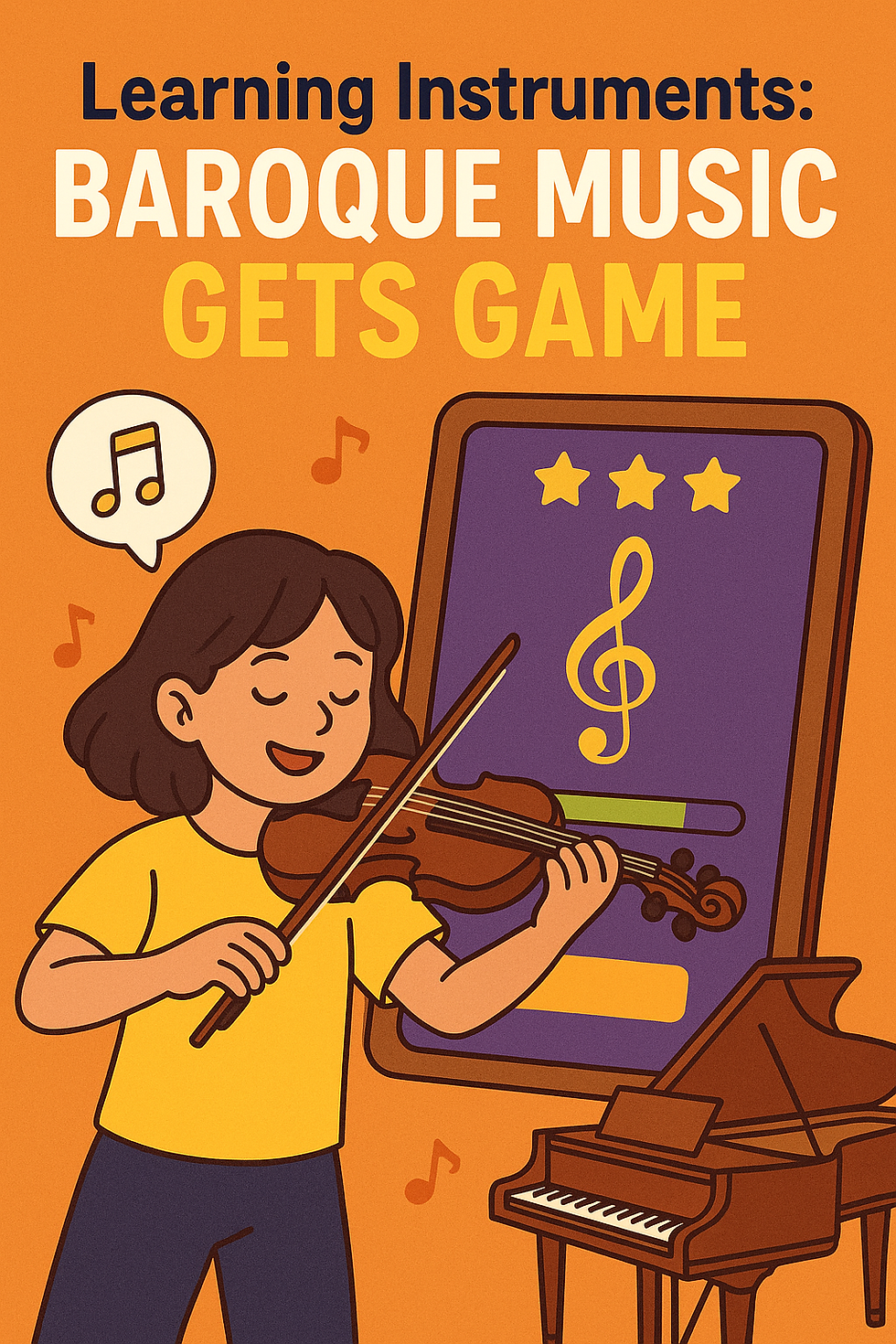Beyond the Harpsichord: The Baroque Rhythm Game Your Fingers Need
- Sharanya naidu
- Oct 19
- 3 min read
Hey Music Learners!
Tired of the same old scales and studies? What if I told you that some of the most exciting, fast-paced, and technically brilliant music you could learn is already deeply connected to the world of video games?
Get ready to meet your new practice ally: Baroque Music.

More Than Just Old School: The Game-Changer
When you hear "Baroque," you probably picture powdered wigs, Bach, and maybe a stiff, formal concert hall. But dig a little deeper, and you'll find an era of music (roughly 1600-1750) that is the ultimate training ground for a modern musician.
And here's the twist: modern video game composers have been drawing on it for decades!
Think about it:
Counterpoint is the Boss Fight: Baroque music is built on counterpoint—multiple independent melodic lines moving at the same time. This is a mental workout! Learning to hear and play these lines (like a Bach invention or a fugue) is like mastering a complex, multi-layered rhythm game. It demands incredible focus and finger independence.
The Original Loops: Due to early game console limitations (only a few sound channels!), composers often looked to the Baroque's tight structures and excellent use of 3- or 4-part harmony. It's concise, compelling, and perfect for looping without becoming irritating. Early chip-tune music often has a distinct Baroque flavour!
Speed and Stamina: Pieces like Bach's toccatas or Vivaldi's concertos are packed with rapid, intricate note patterns. Mastering these is the musical equivalent of grinding for XP. They build the stamina, precision, and speed that will make all your other music—from rock to jazz to contemporary—feel effortless.
Where to Hear the Crossover
The connection is everywhere!
Final Fantasy VII/VIII/IX: Composer Nobuo Uematsu frequently uses Baroque techniques for character themes and castle music, giving those moments a sense of grandeur and historical weight.
Early Console Classics: Listen closely to themes from the NES and SNES eras—many use a three-voice texture, just like a simple Bach chorale or two-part invention.
Modern Orchestral Scores: When a game needs to sound epic and established, like The Elder Scrolls series or Genshin Impact, the composers often lean on the rich orchestral textures and structural rules first perfected in the Baroque era.
Your Baroque Practice Quest Log
Ready to incorporate this powerful tool into your learning? Here are a few places to start, no matter your instrument:
Level 1: The Basics
The Goal: Start simple, building clear technique and even tone.
The Piece: Bach's Minuets (found in Anna Magdalena Bach's Notebook). They are short, harmonically clear, and excellent for learning clean articulation.
Level 2: Independence Challenge
The Goal: Develop finger/hand independence and learn to follow two simultaneous voices.
The Piece: Bach's Two-Part Inventions (especially No. 1 in C Major). This is the gold standard for learning counterpoint. It will feel like juggling at first, but the reward is immense.
Level 3: The Endurance Run
The Goal: Build speed, consistent rhythm, and technical stamina.
The Piece: An excerpt from a Vivaldi Concerto (any instrument!), or a Handel Suite movement. These have exhilarating, repetitive patterns that drill your fingerwork.
Final Thoughts: The High Score
Learning music shouldn't just be a chore—it should be a challenging, rewarding game. By embracing Baroque music, you're not just studying history; you're accessing a fundamental language of music that will make you a more capable, nimble, and insightful player.
So, put that Bach Minuet on your music stand, treat it like the theme to your next grand adventure, and get ready to Level Up!



Comments